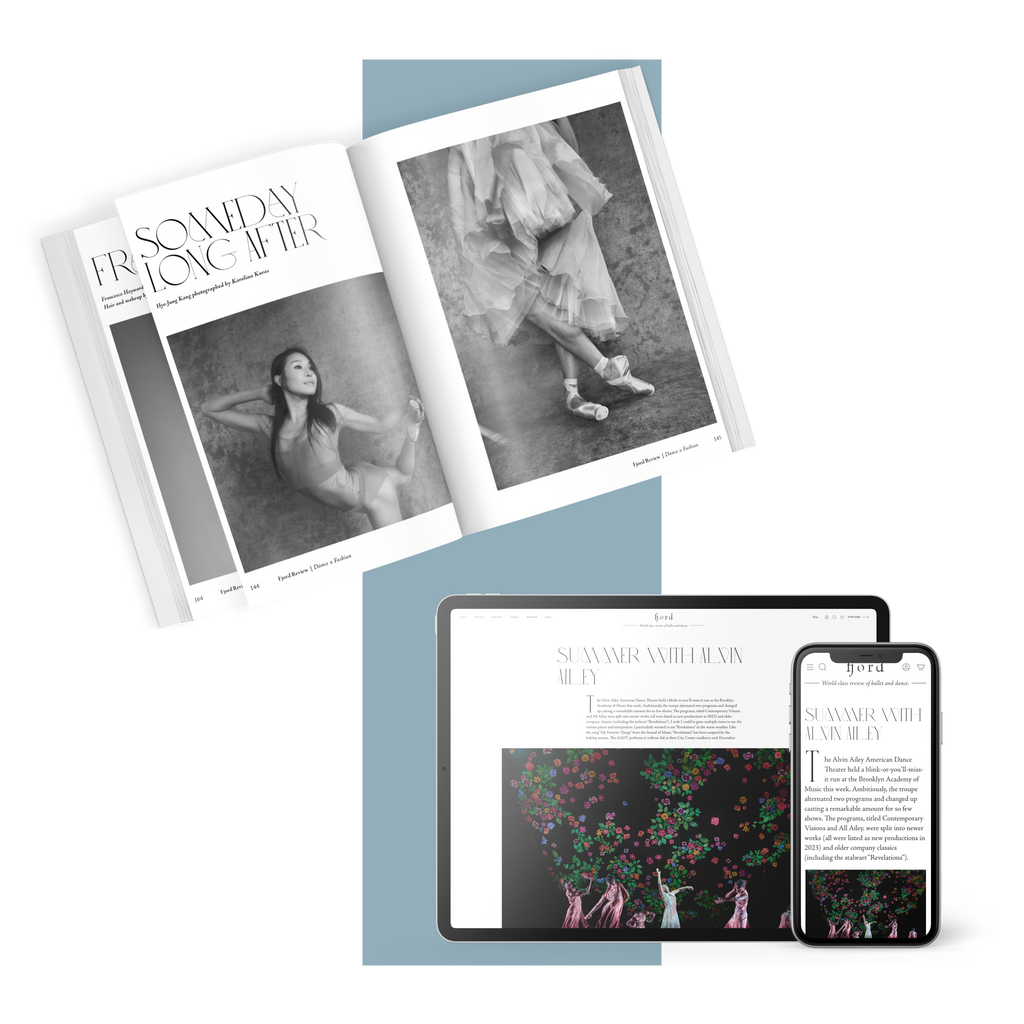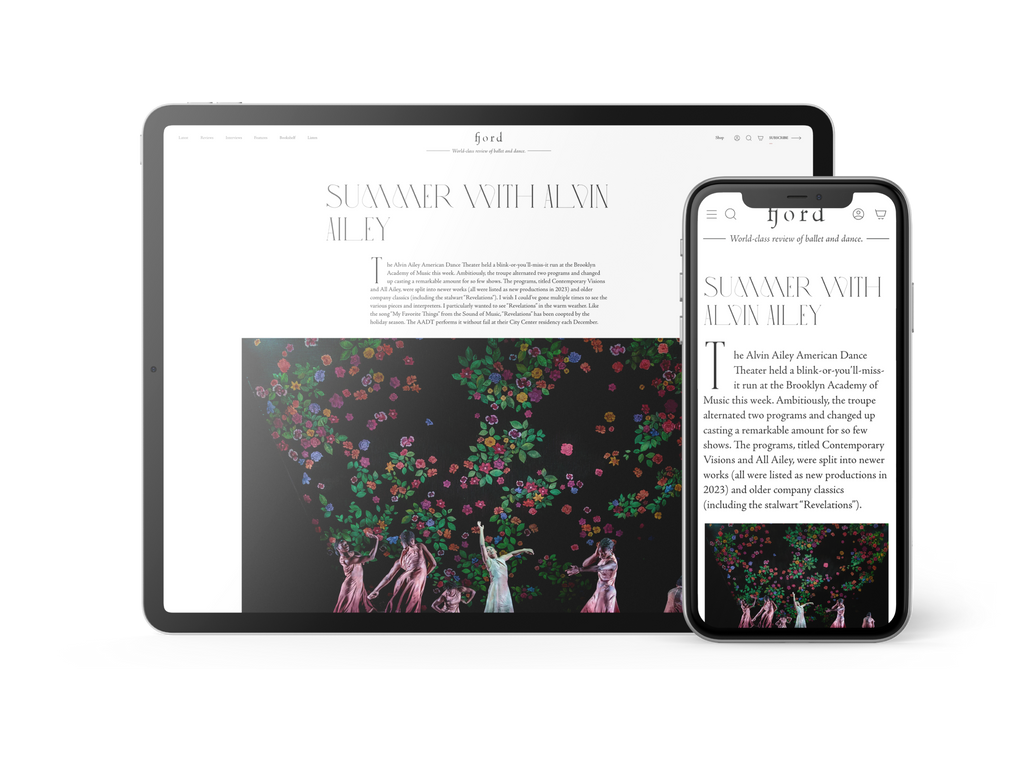Hair's the Thing
Around this time of year, we can all use a little cheer. The early darkness, the cold, the state of the world alone can send one into a spiral.
Continua a leggere
World-class review of ballet and dance.
It is always an exhilarating experience to leave a dance concert eagerly chatting in agreement with those around you about that one favorite piece. Yet it is perhaps the sign of an even stronger concert when those around you are instead in amicable disagreement, each passionately arguing why his or her favorite piece was the “one.” So was the case with Jessica Lang Dance, presented by Celebrity Series of Boston at the Boch Center Shubert Theatre last week. Highlighting six works from 2006-16, the concert offered a satisfying range of visual intrigue—from the purity of a Bach-accompanied solo with an air of traditional ballet (aptly titled “Solo Bach”) to the creatively complex merging of fluid contemporary choreography and dynamic video projection in “i.n.k.” Exiting the theater, one could hear all six pieces being deeply discussed, yet the end result was all surprisingly similar: Regardless of what the viewer’s favorite work was, it was “moving,” “visually striking,” and “made one think.”
Performance
Place
Words

Jessica Lang's “The Calling.” Photograph by Robert Torres


“Uncommonly intelligent, substantial coverage.”
Your weekly source for world-class dance reviews, interviews, articles, and more.
Already a paid subscriber? Login
Around this time of year, we can all use a little cheer. The early darkness, the cold, the state of the world alone can send one into a spiral.
Continua a leggereWill Tuckett’s new production of the “The Nutcracker” for the National Ballet of Japan serves up a holiday feast for the senses. Sweetly invigorating, it’s also a warm toddy for the soul. From start to finish, Tuckett’s “The Nutcracker” is truly a dream.
Continua a leggereBetween New York City Ballet’s “George Balanchine’s The Nutcracker®” and “The Magic Flute” at the Metropolitan Opera, it’s hard to compete with the Upper West Side’s holiday kid offerings.
Continua a leggereThe Sun King not only invented ballet in its modern form but in 1713 also founded the oldest ballet academy in the world.
Continua a leggere
comments